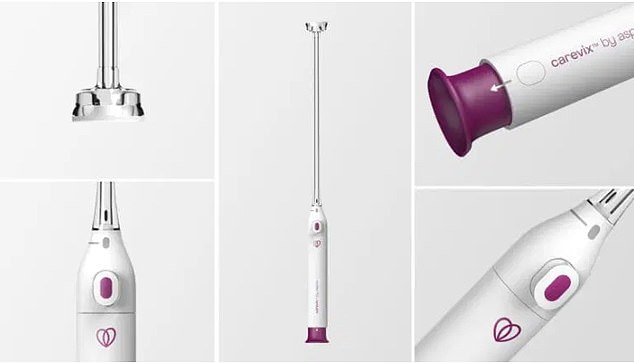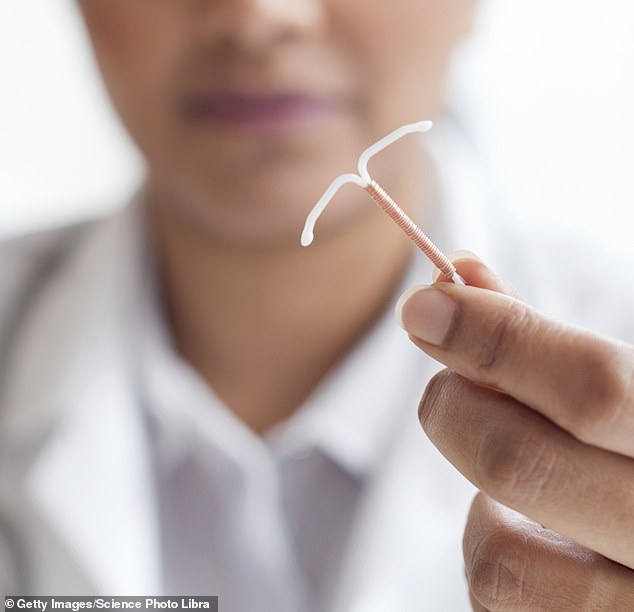Getting an IUD could soon be virtually ‘pain-free’, thanks to new ‘suction procedure’
The most painful form of birth control, used by millions of American women, could soon become virtually pain-free – thanks to a new cervical ‘suction cup’.
Women undergoing procedures to insert an IUD have long been forced to endure the pain of stretching their cervix with the help of a metal device resembling scissors.
It stretches the cervix using sharp hooks before inserting the T-shaped device, which stops fertilization by preventing the sperm from hitting the egg.
However, the traditional ‘stretching device’ is known to be extremely painful as the metal edges often puncture tissue and cause bleeding.
But now experts from Swiss technology company Aspivix have come up with an alternative method that uses suction to manipulate the cervix, reducing pain by three-quarters.
The tenaculum, left, can puncture holes in the cervix as it grips, while the new Carevix device uses suction to stretch the cervix, minimizing bleeding

In a Swiss study, the device was shown to reduce women’s pain scores during insertion by 73 percent
It works by attaching itself to the cervix with a suction cup and prying it apart, without any sharp edges showing.
The Carevix device is still being tested in the US and more studies will need to be done to ensure its efficacy and safety. However, early studies show that it can reduce pain by as much as 73 percent.
It has already proven successful for several European patients and their doctors, who have reported a dramatic reduction in pain and bleeding.
It is common knowledge that inserting an IUD can be extremely painful.
Women who have never given birth are also likely to have a closed cervix, which means the doctor doing the insertion will have to push with some force or use a dilator to place the IUD past the cervix and into the uterus.
Currently, doctors turn to the scissor-like device, medically known as the tenaculum.
The tenaculum is descended from tweezers used to extract bullets from the flesh of Civil War soldiers and is described as a butcher’s hook that can poke holes in the cervix.
The pain of the procedure — which is rarely alleviated with over-the-counter acetaminophen or ibuprofen — has been the subject of millions of TikTok videos, in which women and doctors openly talk about passing out or whimpering on the exam table.
The internet is full of videos of women describing how their doctors downplay their pain.

The IUD is 99 percent effective in preventing pregnancy
A 2023 questionnaire of US physicians showed that only four percent of trained physicians offered their patients an injected anesthetic, which has been proven to reduce pain during the procedure.
In an earlier Swiss study of 100 women in Switzerland, doctors found that Carevix reduced the number bleeding episodes by almost 80 percent, compared to a regular IUD procedure.
The FDA approved the device last year, allowing Carevix’s manufacturer, Aspivix, to market it to doctors in the US.
However, the parameters of the approval do not mean that the FDA has thoroughly evaluated the device for safety and efficacy with the same rigor as medical devices such as implantable pacemakers or artificial hearts.
An IUD is one of the most effective forms of contraception, with a success rate of more than 99 percent, meaning that fewer than one in 100 people with an IUD will become pregnant each year.
This usually happens because the tool is placed incorrectly.
